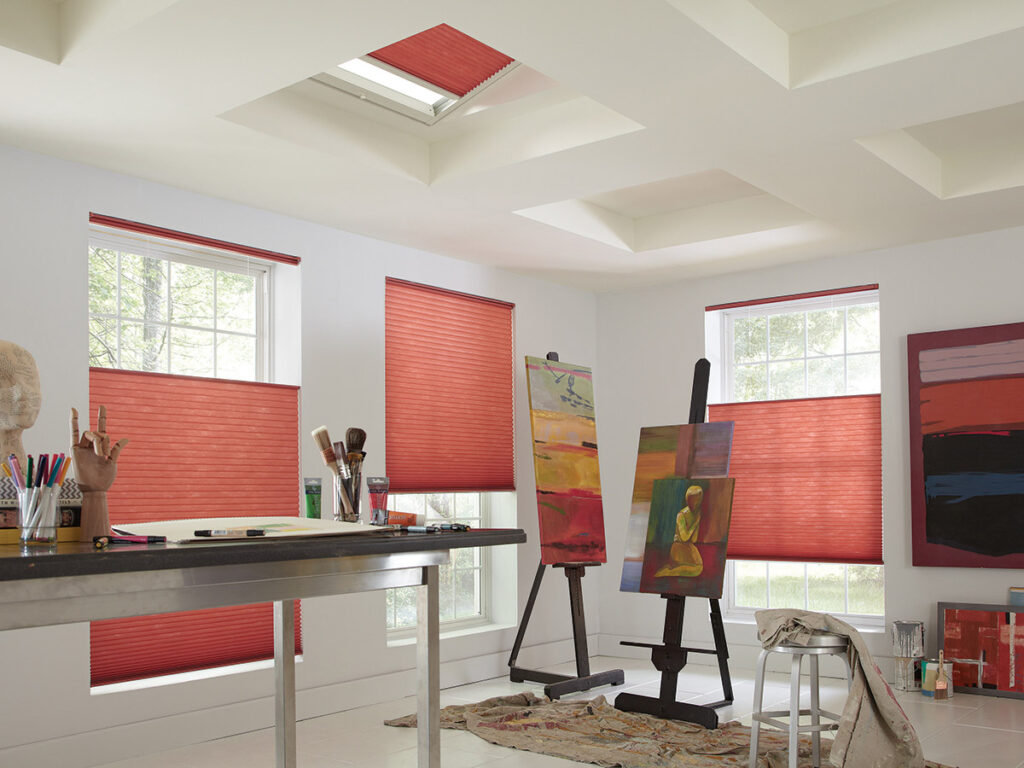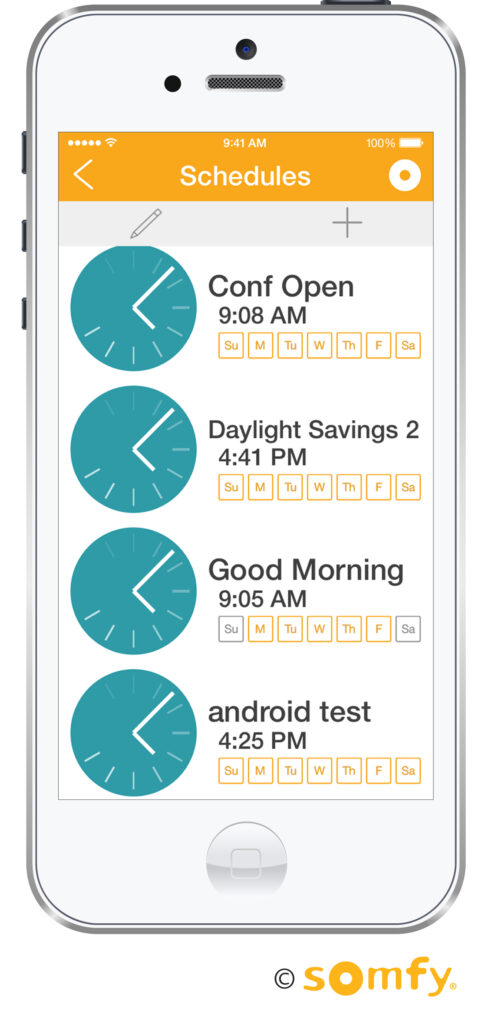Why We Love Cellular Shades for Skylights
If you’re lucky enough to have skylights in your home, you know they are beautiful, highly desirable architectural accents that allow light in places where a wall window won’t do or doesn’t get enough light. Rather than taking up valuable wall real estate, skylights let you add light to bathrooms, closets, kitchens, or anywhere you desire more natural light. But they also have a few downsides. Like any window, they can allow in unwanted heat or cold. There are also times you don’t want light coming in, or you want to reduce the UV rays you’re exposed to. For all these issues, the solution is simple: cover your skylight!
Easier said than done, of course, as unlike many windows, not many people can simply reach the skylight without a ladder. You also want to make sure it still looks great, and doesn’t take away from the beauty of the skylight. Cellular shades are by far the most popular option for skylights with good reason!

Lafayette Interior Designs Parasol® Cellular Shades
Why We Love Cellular Shades for Skylights in Our Client’s Homes
Cellular shades, also known as “honeycomb shades”, truly are the industry expert in temperature control, especially in locations you don’t want draperies or other fabric layers. Skylights are no different! Cellular shades are phenomenal options for covering your skylights because of their unique design. The cells (hence: cellular) create little air pockets, similar to a puffy winter coat, that trap air. When heat comes in through the skylight, it first has to warm the trapped air in all those tiny pockets. Also true of cold, of course! But heat especially poses an issue for skylights as heat rises, and when it’s coming through your ceiling too, you’re going to end up with what’s called the ‘greenhouse effect’. That is, heat entering through glass and creating trapped heat that has nowhere to go, so it just raises temperatures.
Allowing cellular blinds to trap heat/cold before it enters your space makes for a more comfortable home in general. It can also save you significantly on your energy bills.
“In heating seasons, tightly installed cellular shades can reduce heat loss through windows by 40% or more, which equates to about 20% heating energy savings. In cooling seasons, cellular shades can reduce unwanted solar heat through windows by up to 80%, reducing the total solar gain to 15% or less when installed with a tight fit.”
– US Department of Energy

Customize Your Cellular Shades
Cellular shades have a wide variety of customization as well. There are a variety of cell sizes that tend to get larger with the size of the window. You also have multiple levels of opacity to choose from, so whether you want lightly-filtered sunlight or the ability to block out the sun, you can choose what works best for the room you’re working in.
Pleated shades are another great choice to cover your skylights.
Pleated shades look very similar in appearance to cellular shades, but they’re not the same in construction. The single-layer material folds up in similar ways, but there are no air pockets or “honeycomb cells” in their construction. As a result, they don’t provide the same high-level insulating properties of cellular shades. Don’t write them off, though! Blocking light from entering your home at all still helps prevent heat gain. If you’re aiming for light control more than temperature control, they’re a beautiful choice. They come in an incredibly large variety of patterns and styles as well that make matching your home’s style a piece of cake.
They also tend to run cheaper than cellular shades, which may be a deciding factor for you, though you won’t get the same energy cost reductions as you would with air-trapping cellular construction. If you’re looking for a great return on your investment, we can’t recommend the energy savings benefits of cellular shades for skylights enough!
what makes cellular shades for skylights different?
Any window covering that’s designed to stay flush with your skylight is going to require a special track. Most window coverings are designed to stay in place simply with gravity. They hang straight down. In an angled window, clearly that’s not an option. Fortunately, there are unique track systems that we use to keep your shades exactly where you want them with no sagging or gaps. The closer the window covering is to the window, the less unwanted warm or cold air can come in to begin with.
how do I reach my skylight to open and close the shade?

Great question! Clearly, you can’t just just reach up to the ceiling (well, maybe you can but most of us can’t). Fortunately, modern technology gives you plenty of options to cover your skylight and still operate it how and when you’d like.
- Motorization – The easiest solution is to motorize the window covering. This way, you open and close it without ever having to reach the physical covering. You can have a wall switch installed, much like a light switch, or a handy remote control. There are phone or tablet apps, too, that allow you even more options! Program your window covering to close at a time of day before the sun hits it directly, and you’ll benefit from the insulation automatically without needing to think about it. You can also connect it to voice-activated smart devices and simply ask Alexa, Google Assistant, or Siri to control them for you.
- Solar Power – This option has pros and cons. Pros: a wireless solar-powered sensor with a battery can close window coverings automatically when the sun hits to prevent unwanted solar heat gain. The cons: you don’t have control over the automation manually, which may be a deal-breaker.
- Sky Poles – This tool is basically a long, often extendable pole with a little hook on the end. You hook it on a ring on the edge of your window covering, and pull it open or closed that way. Others hook on a handle on the shade or grooves. Not all window coverings have this option, so it’s important to make it clear to your window covering designer (or do your research if you plan on installing this yourself) to make sure the product you’ve chosen has this capability. They’re inexpensive and a great option if you can’t or don’t want motorization.
- Long Cords – Of course, you can have long control cords. Preferably mounted to the wall, since no one wants hanging cords. However, this is by far the least appealing option, and also isn’t safe for homes with children or pets.
Additional Considerations for Skylights:
If your skylight is posing significant issues for your comfort in your home and covering your skylight either isn’t possible, there are other options outside of our specialty. There are special glazes that can help prevent heat gain. You can also tint the window like you would a car. Like any window, you may want to replace it with multi-layered windows with consideration to the “solar heat gain coefficient” rating. That is, a rating that determines the product’s thermal performance.
If you don’t have skylights yet but you’re researching them, the placement of skylights is incredibly important. South-facing skylights are exposed to the most direct sunlight. South-facing, therefore, will need the most attention regarding heat gain and UV rays. There are light pipes instead of full windows, diffusing lenses, and mirrored or sun-tracking options that are worth looking into for long-term comfort. The slope of the skylight also matters. There’s calculations that take into account your latitude and the optimal slope, but we’ll leave that math to the pros in that arena.
Would you like to cover your skylight? Fill out the form below to request a complimentary design consultation!
